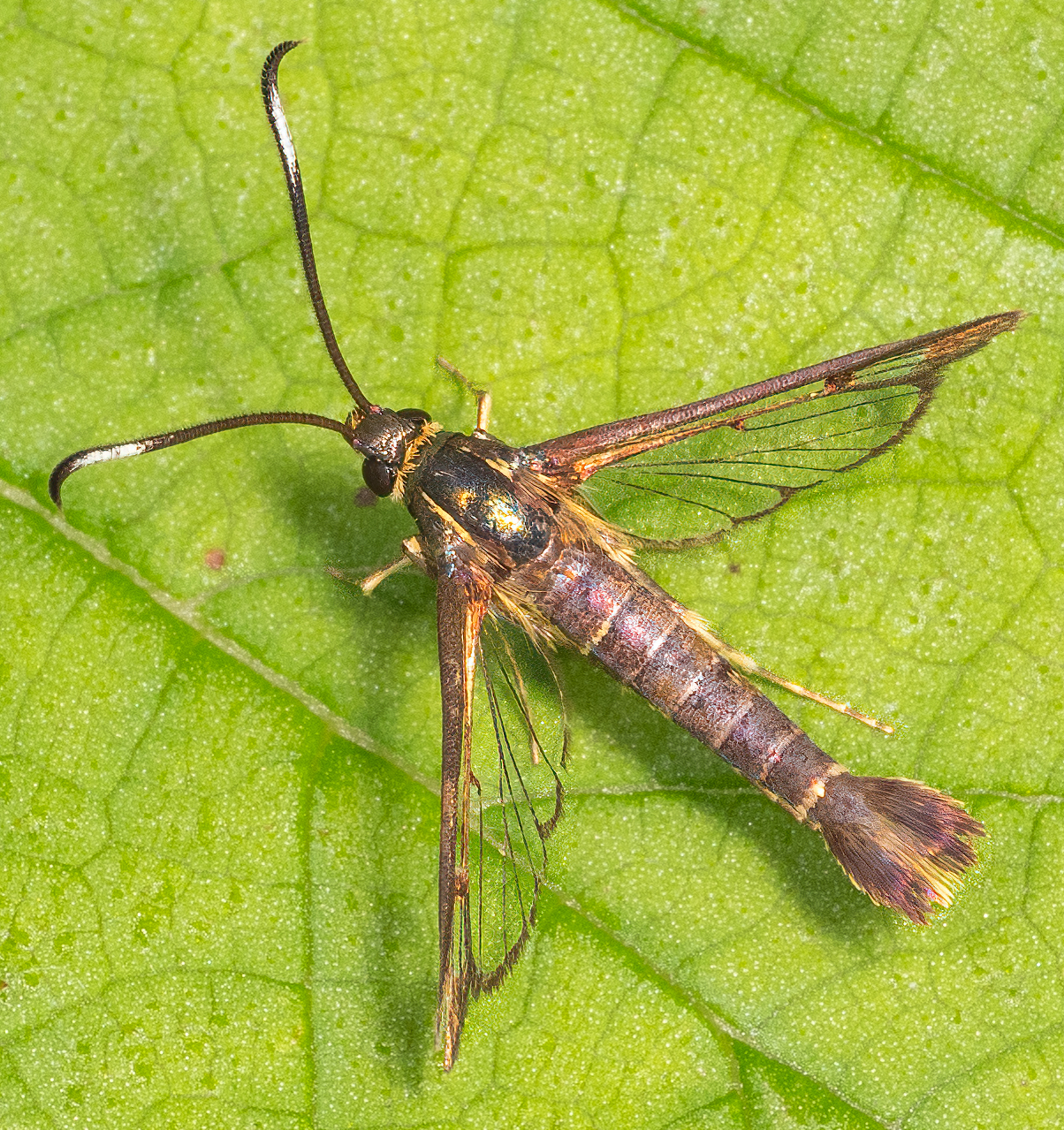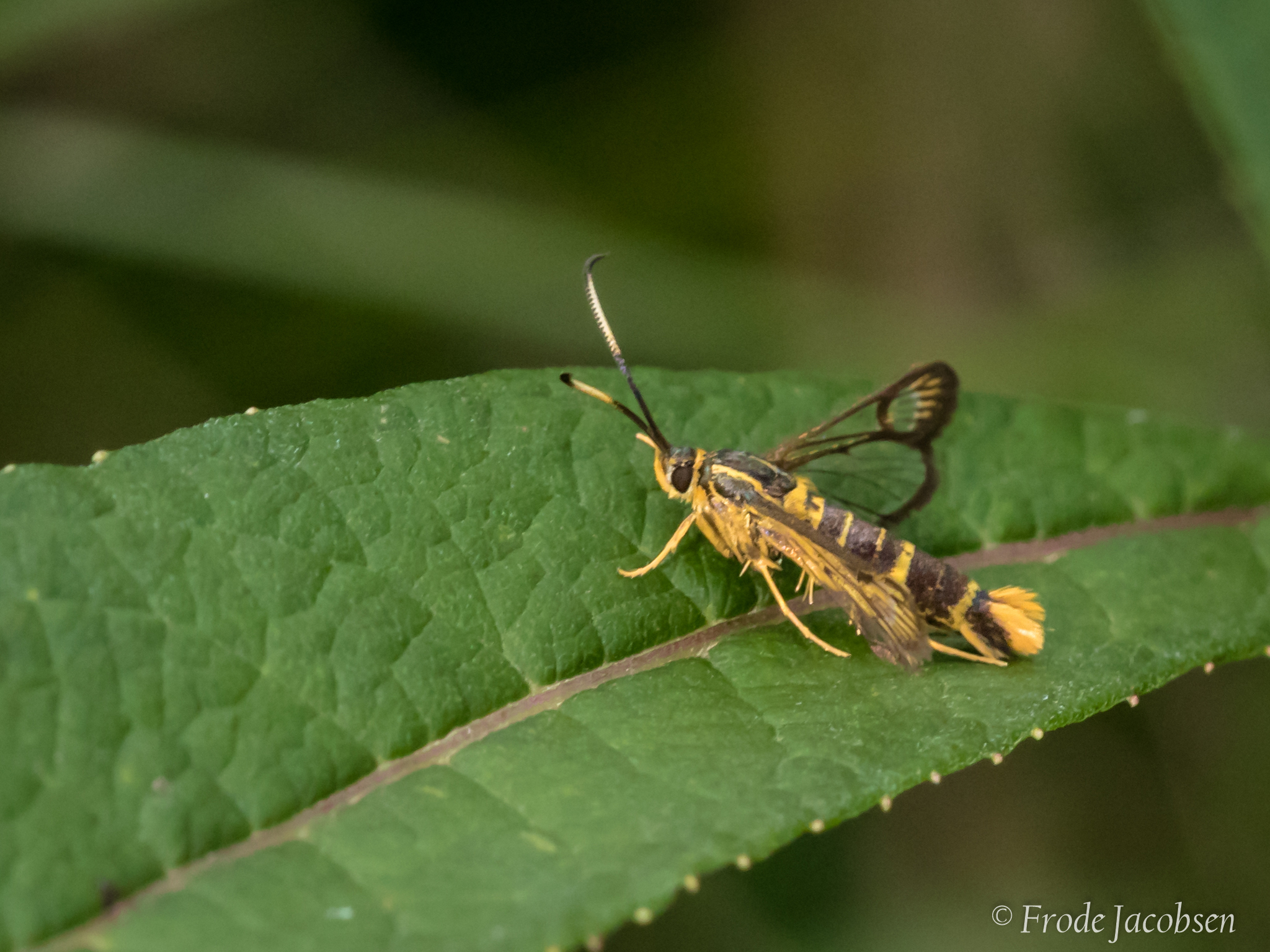Map Snapshot










60 Records
Relationships
Host plant is New York Ironweed (Bugguide).
Seasonality Snapshot
Use of media featured on Maryland Biodiversity Project is only permitted with express permission of the photographer.
Eupatorium Borer Moth in Prince George's Co., Maryland (7/5/2021). (c) thefloorisflava, some rights reserved (CC BY-NC).
View Record Details
Media by
thefloorisflava via iNaturalist.
Eupatorium Borer Moth in Montgomery Co., Maryland (7/13/2024). (c) Jim Moore (Maryland), some rights reserved (CC BY-NC).
View Record Details
Media by
Jim Moore.
Eupatorium Borer Moth in Montgomery Co., Maryland (7/13/2024). (c) Jim Moore (Maryland), some rights reserved (CC BY-NC).
View Record Details
Media by
Jim Moore.
Eupatorium Borer Moth in Montgomery Co., Maryland (Date obscured). (c) Bilcha, all rights reserved.
View Record Details
Media by
Bilcha via iNaturalist.
A Eupatorium Borer Moth in Prince George's Co., Maryland (7/3/2016). Determined by John and Jane Balaban.
View Record Details
Media by
Barbara Thurlow.
Eupatorium Borer Moth in Baltimore Co., Maryland (7/7/2016).
View Record Details
Media by
Miles Marshall.
A Eupatorium Borer Moth in Frederick Co., Maryland (8/23/2015).
View Record Details
Media by
Steve Scholnick.
Eupatorium Borer Moth in Wicomico Co., Maryland (6/28/2021). (c) David, some rights reserved (CC BY-NC-SA).
View Record Details
Media by
David via iNaturalist.
A female Eupatorium Borer Moth in Allegany Co., Maryland (7/28/2023).
View Record Details
Media by
Dave Webb.
A Eupatorium Borer Moth in Washington Co., Maryland (8/30/2008).
Media by
Steve Collins.
Eupatorium Borer Moth in Baltimore Co., Maryland (8/1/2020). (c) Frode Jacobsen, some rights reserved (CC BY-NC).
View Record Details
Media by
Frode Jacobsen.
Eupatorium Borer Moth in Frederick Co., Maryland (7/31/2021). (c) Mark Etheridge, some rights reserved (CC BY-NC).
View Record Details
Media by
Mark Etheridge.
Eupatorium Borer Moth in Prince George's Co., Maryland (7/25/2021). (c) spyingnaturalist, some rights reserved (CC BY-NC).
View Record Details
Media by
spyingnaturalist via iNaturalist.
Eupatorium Borer Moth in Howard Co., Maryland (Date obscured). (c) Timothy Reichard, all rights reserved.
View Record Details
Media by
Timothy Reichard.
Eupatorium Borer Moth in Howard Co., Maryland (Date obscured). (c) Timothy Reichard, all rights reserved.
View Record Details
Media by
Timothy Reichard.
Eupatorium Borer Moth in Howard Co., Maryland (Date obscured). (c) Timothy Reichard, all rights reserved.
View Record Details
Media by
Timothy Reichard.
Eupatorium Borer Moth in Howard Co., Maryland (Date obscured). (c) Timothy Reichard, all rights reserved.
View Record Details
Media by
Timothy Reichard.
Source: Wikipedia
| Carmenta bassiformis | |
|---|---|

| |
| Scientific classification | |
| Domain: | Eukaryota |
| Kingdom: | Animalia |
| Phylum: | Arthropoda |
| Class: | Insecta |
| Order: | Lepidoptera |
| Family: | Sesiidae |
| Genus: | Carmenta |
| Species: | C. bassiformis
|
| Binomial name | |
| Carmenta bassiformis (Walker, 1856)
| |
| Synonyms | |
| |
Carmenta bassiformis, the eupatorium borer moth or ironweed clearwing moth, is a moth of the family Sesiidae.[1] It was described by Francis Walker in 1856, and is found in the United States from Massachusetts to Florida, west to Wisconsin, Kansas and Texas.[2]
The wingspan is 18–26 mm. Adults are on wing from late May to September.
The larvae feed on the roots of ironweed and Joe-Pye weed.
References
[edit]- ^ Markku Savela. "Carmenta". Lepidoptera and some other life forms. Retrieved 2011-12-16.
- ^ "Butterflies and Moths of North America". Butterfliesandmoths.org. Archived from the original on 2010-06-20. Retrieved 2011-12-16.
External links
[edit]
















